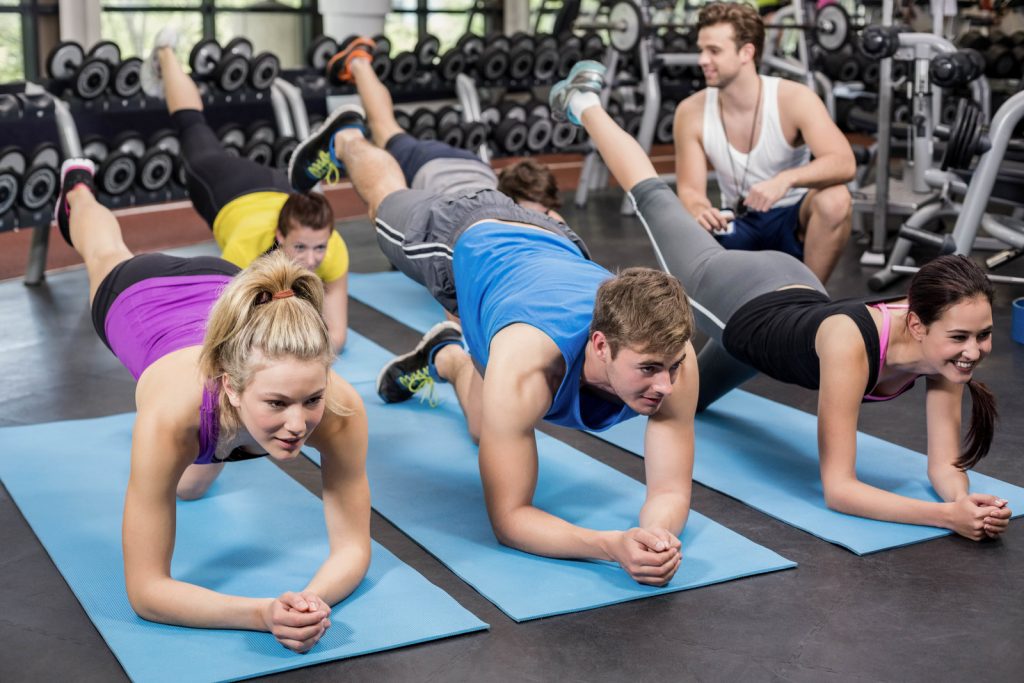Are you tired of feeling self-conscious about your midsection? Want to strengthen and tone your core muscles? One way to achieve a toned abdomen is by flexing your abs regularly.
Many people believe that abs are made in the gym, but the truth is that abs are made in the kitchen. No matter how hard you exercise, if you don’t follow a healthy diet, you won’t see results. However, once you’ve got your diet under control, you can start working on strengthening your core muscles through exercises like ab flexes.
To achieve a strong core, you need to focus on a combination of diet and exercise. In this article, we’ll be discussing the benefits of performing ab flexes, as well as tips and tricks to help you maximize your results and unleash your core strength! So, whether you’re looking to improve your physique or simply feel more confident in your own skin, read on to discover how to flex your abs like a pro.
Contents
Understanding the Abdominal Muscles
To effectively flex your abs, it’s essential to understand the muscles that make up your core. The main muscles include the rectus abdominis, commonly known as the “six-pack” muscles, the obliques that run along the sides of your torso, and the transverse abdominis, which acts as a deep stabilizer. Each muscle group contributes to core stability and movement, helping you perform daily activities and exercise with efficiency.
While flexing your abs, using the correct form is crucial to prevent strain or injury. Incorrect technique can lead to imbalances or muscular imbalances, affecting your overall fitness. Maintaining proper posture and alignment during ab exercises is vital.
Focus on engaging the abs and avoiding excessive strain on the neck or lower back. Pay attention to your breathing, exhaling as you contract your abs and inhaling as you relax.
How To Flex Abs: Effective Exercises And Techniques:
Warm-Up And Stretching
Before engaging in intense exercises, warm-up exercises are essential to increase blood flow and prepare your muscles. Incorporate dynamic movements like leg swings or torso rotations to get your body ready for the workout.
Additionally, stretching the abs can help improve flexibility and prevent injuries. Perform exercises like standing side bends or kneeling lunge stretches to stretch the abdominal muscles.
Basic Abdominal Exercises
Crunches
Crunches are a classic ab exercise that targets the rectus abdominis. Lie on your back, bend your knees, and place your hands behind your head. Lift your shoulders off the floor by contracting your abs, and slowly lower back down.
Focus on using your abs to perform the movement, rather than pulling your head forward. To add variety, you can try reverse crunches or bicycle crunches.
Planks
Planks are fantastic for engaging the entire core. Start in a push-up position, resting on your forearms. Keep your body in a straight line from head to toe, engaging your abs and glutes.
Hold the position for as long as you can, gradually increasing the duration as your strength improves. For increased intensity, try side planks or plank variations such as plank jacks or plank knee taps.
Progressive Ab Workouts
To continuously challenge your core and build strength, incorporate progressive workouts into your routine. These workouts gradually increase in difficulty, allowing your muscles to adapt and grow stronger.
Exercises such as Russian twists, leg raises, or mountain climbers can be added to your routine. Remember to progress gradually and avoid overexertion to prevent injuries.
Russian Twists
Russian twists primarily target the obliques, the muscles on the sides of your abs. Sit on the floor with your knees bent and feet flat on the ground. Lean back slightly and lift your feet off the floor, balancing on your glutes. Hold your hands together in front of your chest and twist your torso from side to side, touching the ground with your hands on each side.
Leg Raises
Leg raises are excellent for targeting the lower abs. Lie flat on your back with your hands by your sides or under your lower back for support.
Lift your legs off the ground, keeping them straight, until they form a 90-degree angle with your torso. Slowly lower your legs back down, stopping just before they touch the ground, and repeat the movement.
Bicycle Crunches
Bicycle crunches work the rectus abdominis and obliques. Lie on your back, lift your legs off the ground, and bring one knee towards your chest while simultaneously twisting your torso and reaching the opposite elbow towards the knee.
Alternate sides in a pedaling motion.
Dragon Flags
Dragon flags are an advanced exercise that targets the entire core, particularly the lower abs. Lie on a bench or a stable surface with your hands holding onto the edge for support.
Lift your legs and hips off the bench, keeping your body straight and lowering yourself down slowly. As you progress, increase the range of motion and control of the movement.
Swiss Ball Rollouts
This exercise challenges the stability of the core. Start in a plank position with your hands on a Swiss ball.
Roll the ball forward while maintaining a straight body position, then roll it back to the starting position. To progress, increase the distance of the rollout or perform the exercise on one leg.
Remember, the key to progressive abs workouts is gradually increasing the difficulty and intensity of the exercises. As you become stronger, you can add resistance, increase repetitions or sets, or progress to more challenging variations.
Effective Techniques
- Control Your Breathing: Controlling your breathing is key to effectively flexing your abs. Breathe in through your nose, and exhale through your mouth while you contract your abs. This will help to engage your core muscles and make your exercises more effective.
- Focus on Your Form: Make sure that you are performing your exercises correctly and maintaining proper form. This will not only prevent injury but also ensure that you are effectively engaging your abdominal muscles.
- Increase Resistance and Endurance: As you become more comfortable with the basic exercises, increase the resistance to make them more challenging. This can be done by holding weights or using resistance bands. Additionally, increasing the number of reps and the length of time you hold certain positions, like planks, will increase your endurance and help you achieve stronger abs.
Maintaining A Healthy Diet For Visible Abs
Visible abs are not solely the result of exercise but also depend on your diet. A balanced diet plays a crucial role in revealing your abdominal muscles. Here are some tips to help you maintain a healthy diet for visible abs:
- Portion Control: Keep an eye on your portion sizes to ensure you’re consuming the right amount of calories for your goals. Avoid overeating and practice mindful eating to prevent unnecessary calorie intake.
- Nutrient-Dense Foods: Focus on consuming nutrient-dense foods that provide essential vitamins, minerals, and antioxidants. Include plenty of fruits, vegetables, lean proteins, whole grains, and healthy fats in your diet.
- Protein Intake: Adequate protein intake is important for muscle recovery and development. Include lean sources of protein such as chicken, fish, tofu, eggs, and legumes in your meals. Protein helps repair and rebuild muscle fibers, supporting the growth of a stronger core.
- Hydration: Stay hydrated by drinking plenty of water throughout the day. Water is essential for maintaining optimal bodily functions and aids in digestion, nutrient absorption, and muscle performance.
- Balanced Macronutrients: Ensure a balance of macronutrients in your diet. Include carbohydrates for energy, lean proteins for muscle growth and repair, and healthy fats for overall health. Adjust the proportions based on your individual needs and goals.
- Meal Timing: Consider spacing out your meals throughout the day to maintain a steady flow of nutrients and energy. Aim for smaller, more frequent meals to keep your metabolism active.
- Consistency and Moderation: Consistency is key when it comes to maintaining a healthy diet. Strive for long-term sustainable habits rather than short-term restrictive diets. Allow yourself occasional treats or indulgences in moderation to maintain a balanced approach to eating.
Conclusion
Flexing and strengthening your abs is an essential part of overall fitness and core strength. By understanding the abdominal muscles, using proper technique, incorporating effective exercises, and maintaining a healthy diet, you can unlock the benefits of a strong core.
Remember to warm up, stretch, and gradually increase the intensity of your ab workouts. Combine core exercises with other forms of exercise, and follow a balanced diet to achieve visible abs.
Consistency, proper form, and a healthy lifestyle are essential for unleashing your core strength and achieving your fitness goals. Start incorporating these practices into your routine and enjoy the results of a strong, healthy core.




